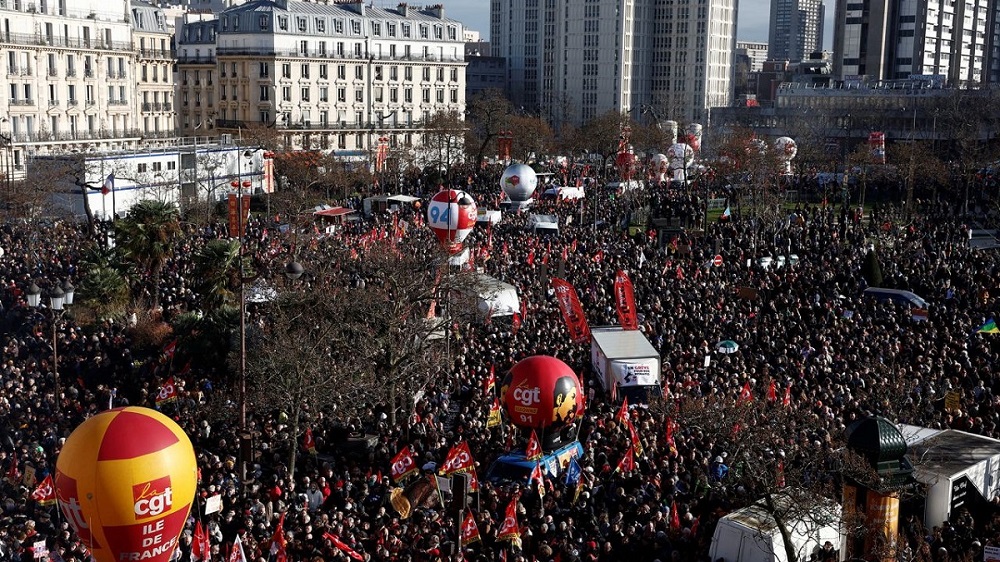
In the mobilization in Paris, some 500,000 people were mobilized, according to the unions. It is clear that the movement that began on January 19 against the pension reform continues and is even gaining momentum in many French cities.
This Tuesday there were more than 150,000 demonstrators in Marseille (exceeding the more than 100,000 on January 19), some 80,000 demonstrators in Toulouse according to the unions (on January 19 there were 50,000), 40,000 in Le Havre (10,000 more than on January 19 ), 35,000 in Rennes, 30,000 in Montpellier and about 25,000 demonstrators in Nice. On the island of Réunion, the number of protesters almost tripled, with 10,000 people mobilizing against 4,000 on January 19. Finally, in Paris, more than 500,000 protesters took to the streets on Tuesday, 100,000 more than on the 19th.
Although January 19 had been the day of the beginning of a quantitatively more important social movement in the last 30 years, the increase observed in the number of protesters this Tuesday in large cities such as Toulouse or Marseille and in many medium-sized cities thus constitutes the key of the day A dynamic that shows that anger against the reform proposed by President Emmanuel Macron grows and continues to take root, even spreading to new cities and new sectors, particularly among the youth.
The streets are full, the strike continues
The success of this demonstration suggests an overall rate of strikers at least as high as on the previous mobilization date, which means that new protesters took the step to mobilize after the success of the previous day. This is particularly the case in the private sector, as Laurent Berger points out: “it is highly mobilized in the private sector and in many sectors, such as metallurgy, construction and public works, in the professions of service to people, health , social problems because these workers know that working two more years is very difficult”.
Regarding the strategic sectors of the economy, the strike was again very massive in the refineries with many sites with more than 80% of the employees stopping and the entry into the battle of the Lavera refineries (Petroineos), in Bouches- du-Rhône, who had not mobilized until then.
At the electricity company EDF (Électricité de France), the rate of strikers generally remains at 40.3%. A significant level, which denotes a very strong discontent in the sector. On the side of railway and tram workers, the mobilization decreased slightly with a rate of strikers of 36.5% in the state railway company, the SNCF, according to the unions. A mobilization that still had a very strong impact on metro, RER and train traffic.
Among teachers and education workers, the SNES-FSU (Secondary Schools Union) announced that “for the second time in ten days, the strike is majority.” A still significant mobilization, with a mobilization rate of 65% among university and secondary school teachers.
What will be the consequences of the new day of protests?
The strong increase in the mobilization this January 31 shows that the anger continues to take root and expand. The day of mobilization, after counting the total number of protesters in the country, could break the historical records registered by in 2010, testifying to the increasingly massive nature of the movement against the pension reform.
A massiveness that, however, should not mask the contradictions of the movement, particularly regarding the plan of struggle, where we do not see that the strike has any expansive dynamics in the most strategic sectors. Here, the responsibility for the pressure strategy of the trade union leaders deserves to be discussed, especially since the issue of the plan of struggle that will be announced at the end of the inter-union meeting will be crucial for the continuity of the movement.
Source: www.laizquierdadiario.com

